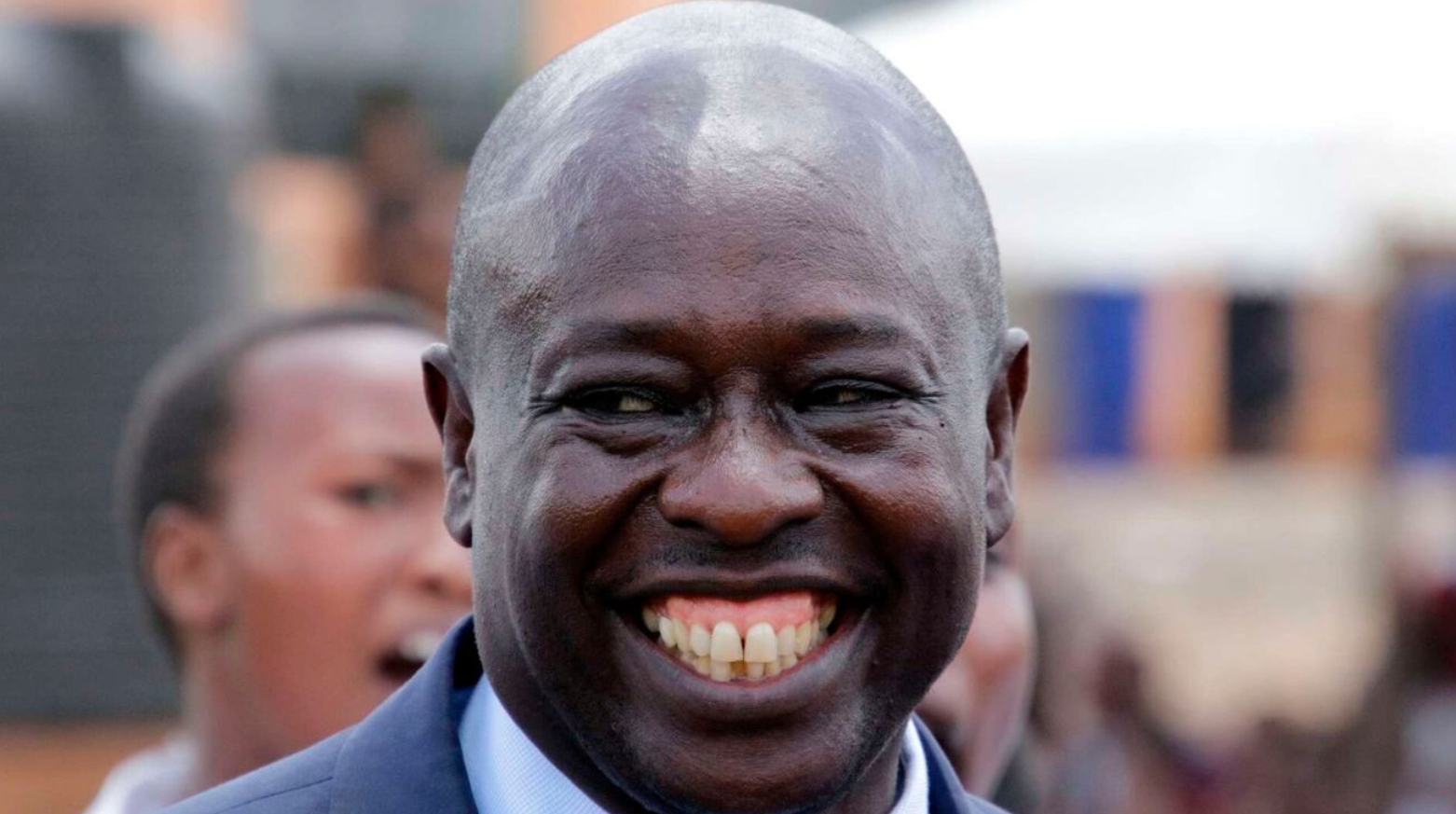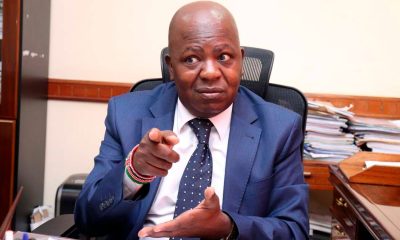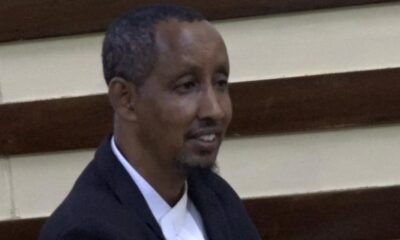Politics
FACT-CHECK: Gachagua’s Claims About Mount Kenya’s Economic Dominance Is Largely FALSE

Former Deputy President’s assertions about Kikuyu community driving Kenya’s economy contradict official government data
Former Deputy President Rigathi Gachagua’s sweeping claims that the Mount Kenya region is “the heartbeat of Kenya’s economy” and that “when you destroy this community, you destroy Kenya” represent a dangerous oversimplification that distorts Kenya’s economic reality and promotes harmful ethnic supremacist narratives.
Speaking to Kikuyu diaspora members in Boston on July 20, 2025, Gachagua painted his community as indispensable economic drivers, claiming that Kenya’s current economic challenges stem from Mount Kenya people allegedly withholding taxes and investments.
A thorough examination of official government data reveals these claims to be fundamentally flawed and potentially divisive.
The Numbers Don’t Lie: Nairobi Leads, Not Mount Kenya
According to the most recent Kenya National Bureau of Statistics (KNBS) data on Gross County Product, Nairobi City County emerges as the undisputed economic powerhouse, contributing 27.5% to the national GDP. This is followed by Kiambu (5.6%), Nakuru (5.2%), and Mombasa (4.8%).
When examining these figures critically, several key facts emerge that directly contradict Gachagua’s narrative:
Nairobi’s Dominance is Undeniable: Contributing more than a quarter of Kenya’s GDP, Nairobi’s economic output dwarfs any single ethnic community’s contribution. Importantly, Nairobi is Kenya’s most cosmopolitan county, home to people from all ethnic backgrounds, making it impossible to attribute its economic success to any single community.
Mount Kenya Region’s Actual Contribution: Even if we generously aggregate all traditionally Kikuyu-majority counties (Kiambu, Murang’a, Nyeri, Kirinyaga, and parts of Nakuru), their combined contribution falls well short of Gachagua’s implied dominance. Kiambu, the largest contributor among these, accounts for just 5.6% of national GDP.
Regional Economic Diversity: The data shows significant contributions from diverse regions: Mombasa (4.9%), Meru (3.3%), and Machakos (3.2%), demonstrating that Kenya’s economy is geographically distributed rather than concentrated in any single ethnic region.
The Tax Contribution Myth
Gachagua’s claim that Mount Kenya people have “stopped paying taxes” as a form of economic protest lacks any credible evidence. The Kenya Revenue Authority (KRA) reported an impressive 11.1% growth in revenue collection for the financial year 2023/2024, directly contradicting any narrative of mass tax resistance.
KRA’s revenue collection systems are sophisticated and do not rely on voluntary compliance from any single ethnic community. The suggestion that one region could single-handedly cripple Kenya’s tax base reveals a fundamental misunderstanding of how modern tax systems operate.
Dangerous Ethnic Economic Nationalism
Gachagua’s assertions venture into troubling territory by promoting what economists term “ethnic economic nationalism” – the false belief that one ethnic group drives a nation’s entire economy. This narrative is not only factually incorrect but potentially dangerous for several reasons:
Undermines National Unity: By suggesting that one community is economically indispensable while others are presumably dispensable, such rhetoric threatens Kenya’s carefully maintained ethnic balance and national cohesion.
Ignores Economic Interdependence: Kenya’s economy functions as an integrated system where coastal trade, agricultural production, manufacturing, services, and technology sectors all play crucial roles. No single region or ethnic community operates in isolation.
Historical Precedent for Conflict: Similar ethnic economic supremacist narratives have contributed to tensions and conflicts in other countries. Kenya’s post-independence success has been built on moving away from such divisive rhetoric.
The Reality of Kenya’s Economic Geography
Kenya’s economic landscape is far more nuanced than Gachagua’s simplistic ethnic lens suggests:
Sectoral Distribution: Agriculture, which employs the majority of Kenyans, spans all regions. Tourism relies heavily on coastal and wildlife areas. Manufacturing is concentrated in urban centers across multiple counties.
Infrastructure and Location Advantages: Economic activity often correlates with infrastructure development and geographical advantages rather than ethnic composition. Nairobi’s economic dominance stems from its role as the capital, transportation hub, and financial center – not from any particular ethnic group’s entrepreneurial superiority.
Demographic Complexity: Even in so-called “Mount Kenya” counties, populations are increasingly diverse, with internal migration patterns creating mixed communities throughout the country.
International Comparative Context
Gachagua’s claims about Kikuyu entrepreneurial dominance echo similar ethnic economic myths found in other countries that have often led to resentment and conflict. Successful multi-ethnic nations like Kenya thrive precisely because they avoid such dangerous generalizations and instead build inclusive economic systems.
The Political Calculation
It’s important to note that Gachagua’s statements appear to serve a specific political purpose – positioning himself as a defender of Mount Kenya interests while building a narrative of persecution. However, such tactics come at the expense of national unity and accurate economic discourse.
Conclusion: Facts Over Fiction
The data is clear: Kenya’s economy is driven by diverse sectors, regions, and communities working together. While the Mount Kenya region certainly contributes to the national economy, so do all other regions. Nairobi leads in GDP contribution, coastal areas drive tourism and trade, pastoral communities manage vast rangelands, and agricultural communities across the country feed the nation.
Gachagua’s narrative of Mount Kenya economic indispensability is not supported by official government statistics and serves to divide rather than unite Kenyans. As Kenya continues to build its economy in an increasingly complex global environment, success will come from recognizing and harnessing the contributions of all communities, not from promoting the supposed supremacy of any single group.
The former Deputy President would serve Kenya better by promoting inclusive economic policies rather than divisive ethnic economic nationalism that threatens the very foundation of Kenya’s diverse, unified society.
This fact-check is based on official data from the Kenya National Bureau of Statistics, Kenya Revenue Authority, and other government sources. The author welcomes corrections based on verifiable data.
Kenya Insights allows guest blogging, if you want to be published on Kenya’s most authoritative and accurate blog, have an expose, news TIPS, story angles, human interest stories, drop us an email on [email protected] or via Telegram
-

 Investigations2 weeks ago
Investigations2 weeks agoBillions Stolen, Millions Laundered: How Minnesota’s COVID Fraud Exposed Cracks in Somali Remittance Networks
-

 News2 weeks ago
News2 weeks agoUS Moves to Seize Luxury Kenya Properties in Sh39 Billion Covid Fraud Scandal
-

 Investigations2 weeks ago
Investigations2 weeks agoJulius Mwale Throws Contractor Under the Bus in Court Amid Mounting Pressure From Indebted Partners
-

 News2 weeks ago
News2 weeks agoMAINGA CLINGS TO POWER: Kenya Railways Boss Defies Tenure Expiry Amid Corruption Storm and Court Battles
-

 Business4 days ago
Business4 days agoEastleigh Businessman Accused of Sh296 Million Theft, Money Laundering Scandal
-

 Americas2 weeks ago
Americas2 weeks agoUS Govt Audits Cases Of Somali US Citizens For Potential Denaturalization
-

 Business3 days ago
Business3 days agoMost Safaricom Customers Feel They’re Being Conned By Their Billing System
-

 Business4 days ago
Business4 days agoEXPLOSIVE: BBS Mall Owner Wants Gachagua Reprimanded After Linking Him To Money Laundering, Minnesota Fraud
















